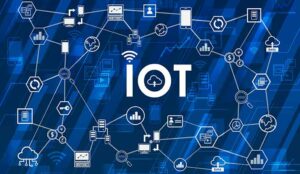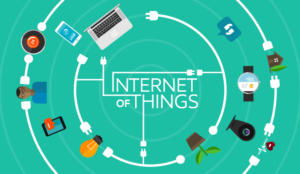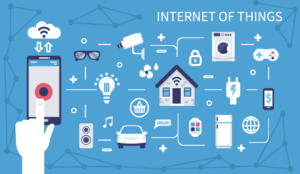Across many sectors there’s a growing understanding of the importance of the Internet of Things (IoT) in customer service.
For the first time IoT-equipped smart devices are now communicating automatically, without human involvement.
They are sharing real-time data on everything from power consumption to environmental information and even requests for service. For example, smart printers now message manufacturers when they are running low on ink, enabling new supplies to be sent before they run out.
Broadly, IoT will impact customer service through two distinct types of interaction:
- Machine to machine, such as notifying of faults or requesting service. In this case the whole process can be automated. Customer service systems will receive a request from the customer’s smart device, which triggers booking an engineer visit or the dispatch of new supplies.
- Supporting consumers and citizens by leveraging smart devices to provide information that will enhance the customer experience. For example, smart parking meters or car parks could notify drivers of nearby free spaces through an app. Similarly, personal sensors could call an emergency hotline if they detect that someone has fallen over.
Both of these approaches benefit both customers and the organisation they are interacting with, in four key ways:
1. Providing Real-Time Information
Being able to monitor what is happening in real time to devices and infrastructure gives organisations greater control. They can monitor operations and spot issues as they develop, automatically.
Predictive maintenance of equipment before it goes wrong, ensures uninterrupted service which helps to improve the overall experience.
For example, a housing association could track when a boiler in a tenant’s property needs a service and book an engineer’s appointment.
Or a council could be notified when a smart bin is nearly full and needs emptying. On the environmental side, water level sensors can help monitor potential flooding and send warnings before it is too late.
Real-time information also empowers customers. They can see when particular roads are congested and plan different routes or check pollen or pollution levels before leaving home. They can even check whether local tennis courts are free, avoiding wasted trips out.
2. Improving Efficiency and Valuing Customer Time
Investing in the IoT brings tangible return on investment for organisations. They can monitor their activities more effectively and optimise operations to save money and time.
For example, by monitoring their buildings, they can switch off lights or turn down thermostats in unused rooms. Additionally, local councils can benefit from IoT investment by reducing the need for unexpected callouts to replace everything from streetlights to traffic signals.
Customers can also benefit from IoT. For instance, by automating processes between machines, customers no longer have to waste time emailing to request more printer ink.
As technology advances and becomes established, smart devices will be able to handle ever more complex service requests. For example, checking calendars to see when would be convenient for an engineer to visit and automatically booking the slot without human involvement.
3. Analysing and Optimising the Experience
Customer expectations continue to soar, which means organisations need to continually improve the experience they provide. Analysing the enormous volumes of information produced by IoT devices delivers a key source of data that can pinpoint where advances can be made.
For example, analysis could show when unexpected faults occur in products. It would then automatically send through a software patch to update them. IoT sensors can also be used to capture feedback from customers and citizens on the service they’ve experienced or to report issues.
Organisations can use analytics to improve their services, such as how many staff are required in a particular location by measuring footfall in the area over time.
4. Predicting and Innovating
As well as optimising the current experience, IoT data can be used to power innovation. By using AI and machine learning to find patterns in data, companies can spot unmet needs and create new products and services for their customers.
This means they improve the overall experience and increase engagement with consumers, boosting loyalty and building a reputation as innovative, customer-centric organisations.
Of course, there are challenges to the roll-out of the Internet of Things in customer service. It is vital that IoT programs:
Protect Data at All Times, Keeping It Safe and Secure
Organisations need to meet regulations such as the GDPR when it comes to personal information. They should anonymise any data that enables individuals to be publicly identified.
For instance, local authorities operating IoT-equipped cameras should follow clear codes of conduct and only use the information they gather for specific, well-defined purposes.
Use Information Primarily to Improve the Customer Experience
That means putting the needs of the customer or citizen first, and using IoT data in innovative ways to make the lives of customers easier.
Get Customer Buy-In
Many customers are happy to use smart devices and see the benefits they provide. However, some are likely to be wary and potentially concerned about privacy, security or giving up control.
Therefore, speak to your customers and identify early adopters. Find specific use cases that different groups may benefit from. For example, elderly people may be happier to adopt IoT healthcare monitoring if it means they can remain at home.
Globally the number of IoT devices is forecast to triple between 2020 and 2030, hitting over 29 billion. That means that every organisation, whether in the private or public sector, should understand the opportunities IoT delivers to improve customer service, increase efficiency, and drive innovation.
This blog post has been re-published by kind permission of Enghouse Interactive – View the Original Article
For more information about Enghouse Interactive - visit the Enghouse Interactive Website
Call Centre Helper is not responsible for the content of these guest blog posts. The opinions expressed in this article are those of the author, and do not necessarily reflect those of Call Centre Helper.
Author: Enghouse Interactive
Published On: 16th May 2023
Read more about - Guest Blogs, Enghouse Interactive






 Enghouse Interactive delivers technology and expertise to help bring your customers closer to your business through its wide range of customer contact solutions.
Enghouse Interactive delivers technology and expertise to help bring your customers closer to your business through its wide range of customer contact solutions. 








